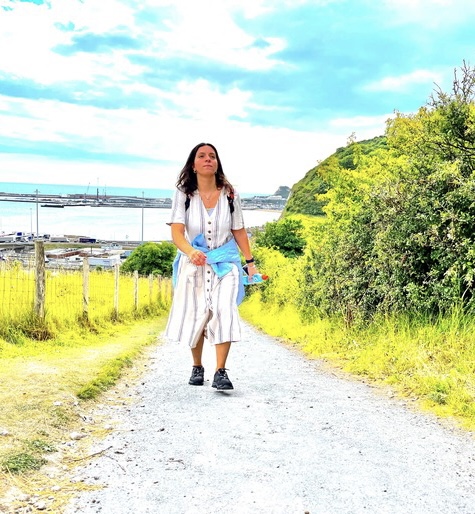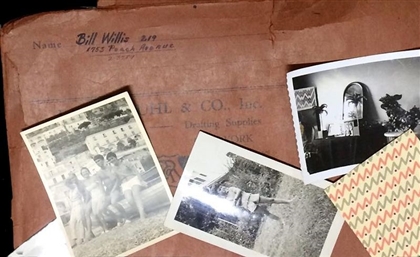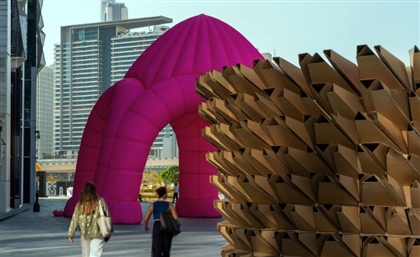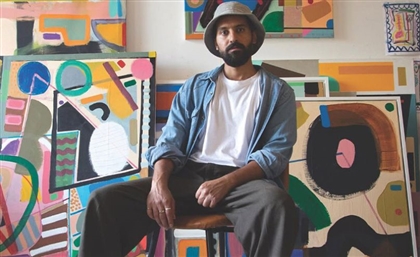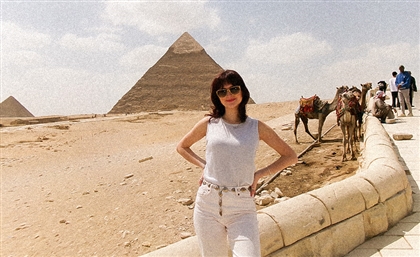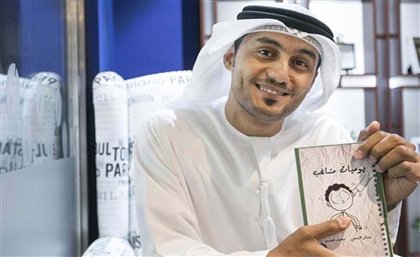DEOND Builds Enfold Pavilion at Dubai Design Week
The pavilion transforms cardboard sheets into biomimetic forms, echoing the rugged structure of a palm tree trunk.
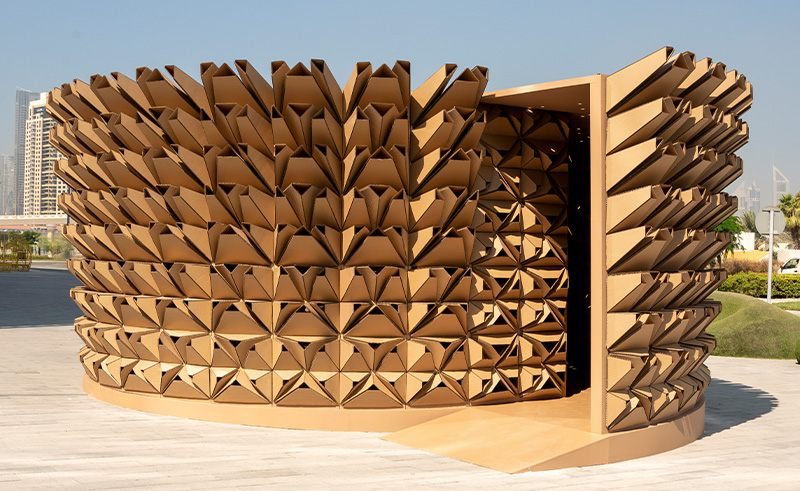
As you stroll through the grounds of the third edition of Dubai Design Week, you’ll come across a dynamic, spiky pavilion in earthy tones that appears to be made almost entirely out of cardboard. This is Enfold, an installation by Dubai-based multidisciplinary practice, DEOND.

“The Enfold pavilion represents the very essence of what we have established here with DEOND, our new multi-disciplinary practice, in the region,” Ross Lovegrove, Co-founder and Director of DEOND, tells SceneHome.

Manifesting their dedication to integrate advanced manufacturing with interactive installation and architecture, Enfolds fosters a symbiotic relationship of architecture with nature. Crafted from hand-folded corrugated cardboard, Enfold’s philosophy of design, materiality and manufacturing aligns with the exhibition’s commitment to sustainability.

“Looking to combine advanced intelligent parametric design, with materials, logic and innovative fabrication technologies, Enfold is a temporary micro architecture that shows how a new aesthetic of beauty and logic can be created specific to location,” Lovegrove explains.
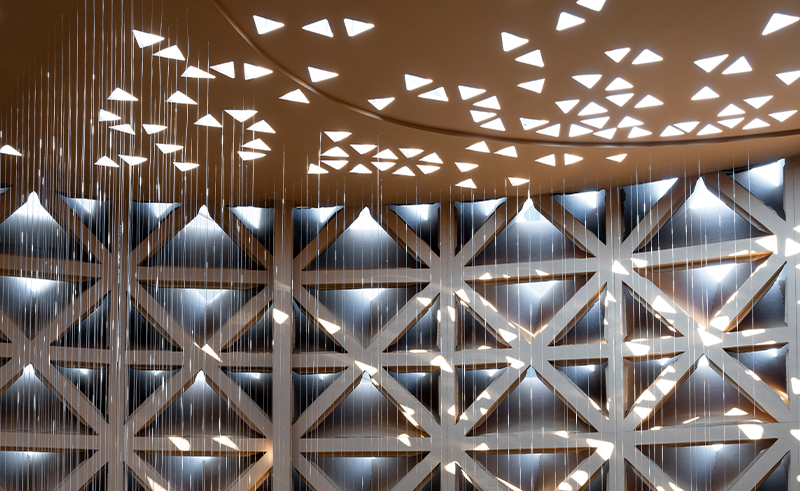
Expressing a biomimetic approach, the installation draws inspiration from the rugged, angular exterior of a palm tree trunk. Each module is parametrically designed to allow sunlight to filter through the triangular openings, creating a dynamic play of light within.

“The pavilion highlights the power of computational design in transforming a nature-inspired vision into tangible reality,” Charbel Baliss, Computational Architect at DEOND, says. “Parametric software was crucial for conceiving, fabricating and assembling the eco-friendly structure throughout the use of sustainable materials.”
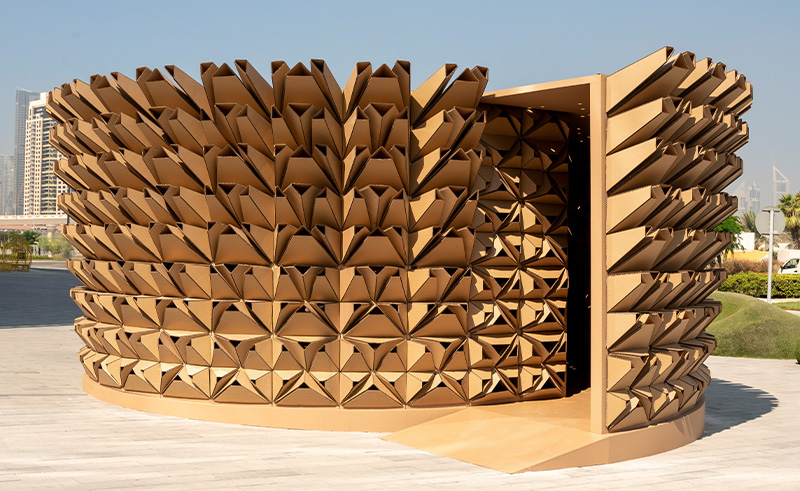
While the rough exterior may seem striking, the interior unfolds within a circular geometry, creating a seamless sense of enclosure that captures the unified essence of body, mind and technology. As you step inside, a sacred atmosphere cascades over you, with soft, natural light filtering through the perforated roof, its density and size shifting as it moves across the space.

Struck by the 'phy-gital' display - a volumetric 3D podium made from a cluster of transparent, reflective wires and two digital screens seamlessly integrated into the pavilion’s architectural skin - you are instantly transported into an entirely new digital realm.
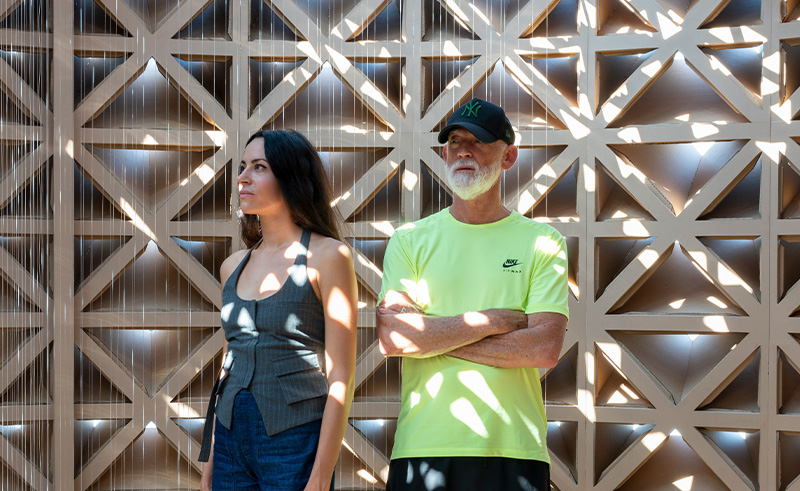
“The artistic and creative direction principles guiding the pavilion aimed to craft a new emotional spatial interface, offering visitors a deeply poly-sensorial experience,” Ila Colombo, Co-founder, CEO and Creative Director of DEOND, says. “This vision is expressed through the interplay of textures on the exterior skin and the intimate interior space, thoughtfully inspired by the regional flora and the unique daylight of the Middle East.”
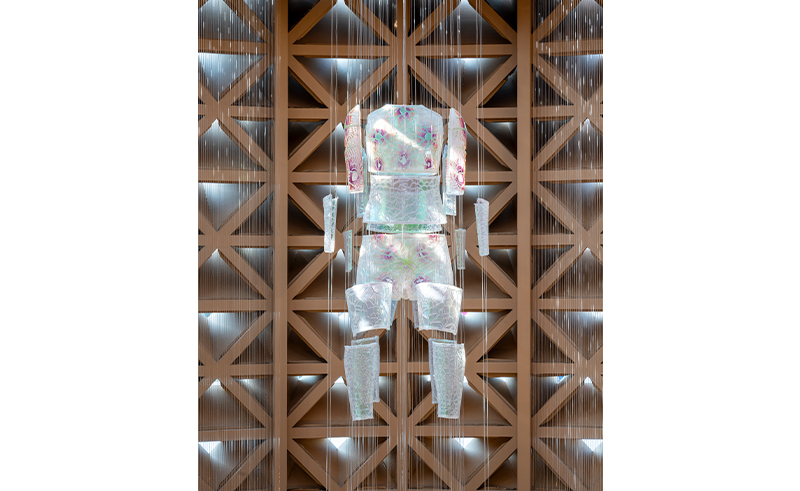
At the heart of the pavilion, the HUG (Holistic Unified Garment) bodysuit is divided into multiple pieces and suspended by transparent wires, eliminating the need for bulky support materials. This allows the volumetric garment to float freely, interacting with the surrounding light.
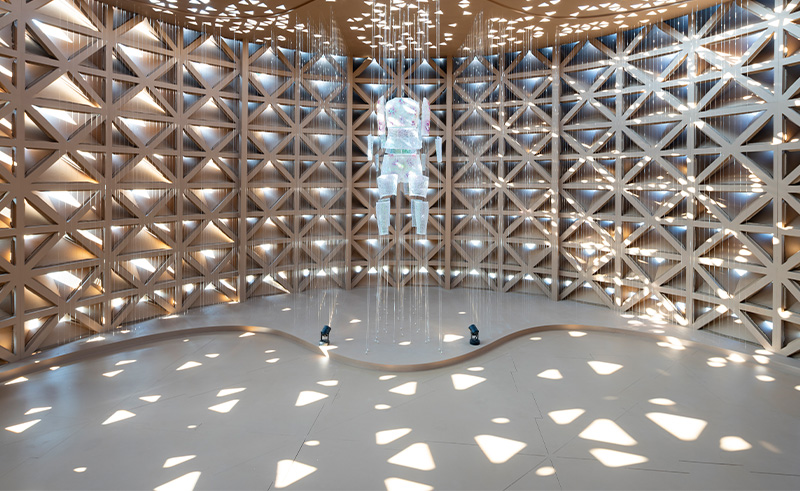
“The HUG is a sculptural centrepiece that transcends mere form, symbolising the delicate embrace between the corporeal and the digital,” Colombo explains.

From a specific vantage point, the arrangement of wires comes together, presenting a seamless, holistic view of the garment, and strengthening the visual and conceptual connection between the body, technology, and space.
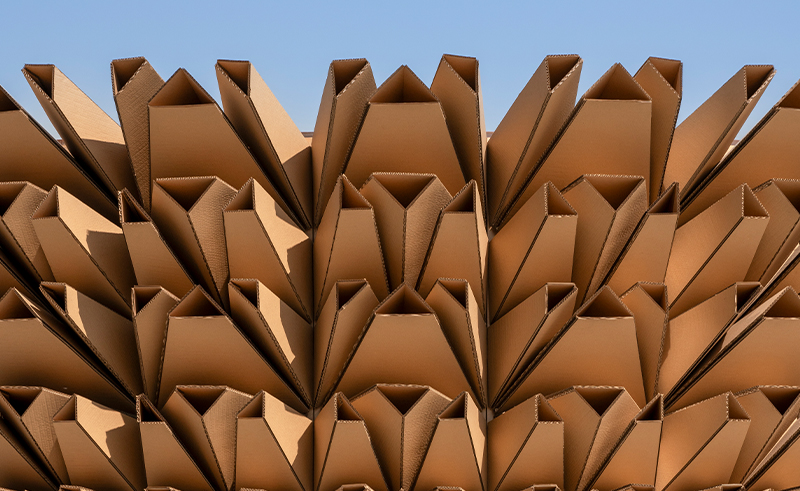
“The amalgamation of technology, nature and creativity allowed us to convert simple cardboard sheets into a captivating parametric skin,” Baliss highlights.
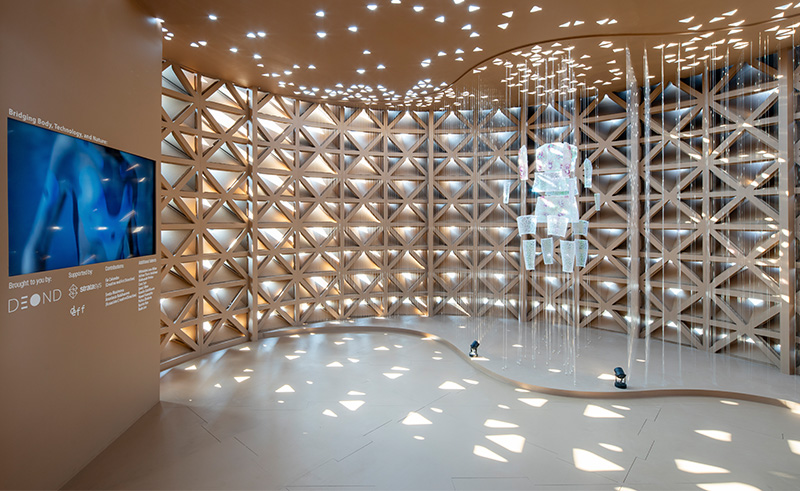
By blending Eastern therapeutic practices with Western scientific and technological approaches, the HUG garment offers innovative solutions for reducing anxiety and calming the mind and body. It explores two concepts: the body as a machine with limitless potential, and the body as a garden that nurtures self-regulation. Designed using AI and 3D tools, the garment mimics natural forms and targets key trigger points, investigating how these ideas can enhance both the human body and its environment.
Photography Credit: DEED Studio
- Previous Article Israel PM Netanyahu Confirms Ceasefire Deal with Hezbollah
- Next Article UAE’s First Autism Friendly Dental Clinic Opens in Dubai
Trending This Week
-
Dec 27, 2025







